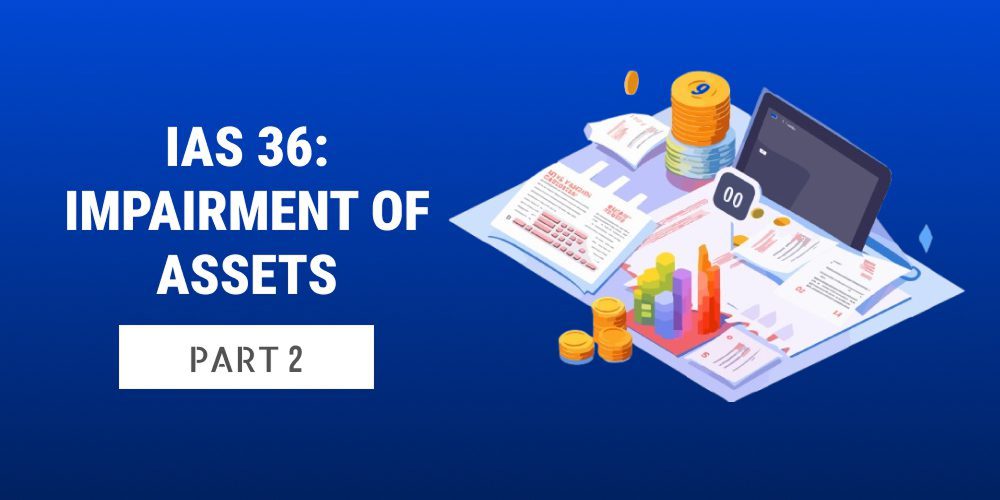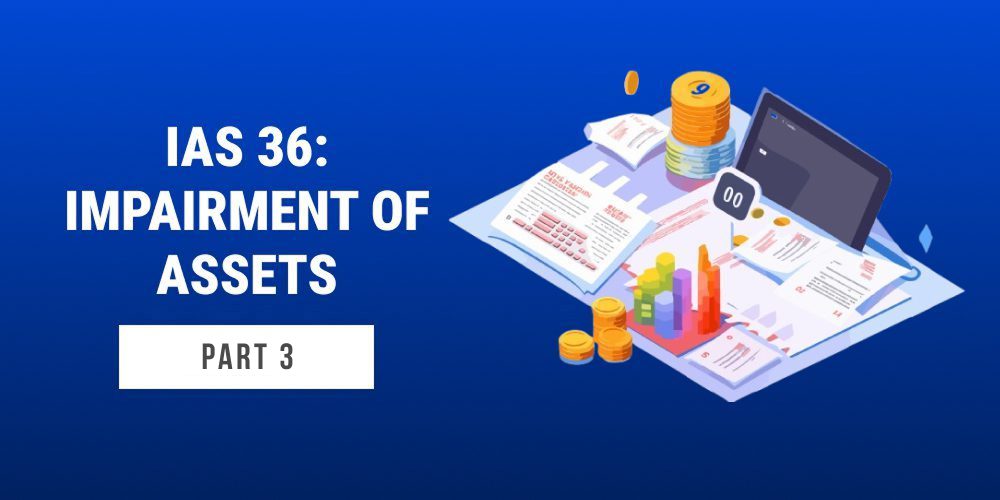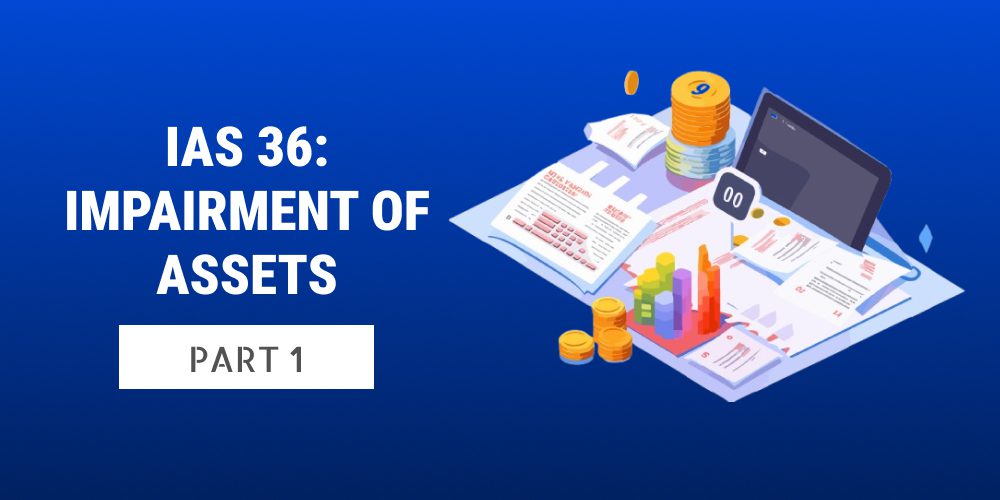
IAS 36 – Impairment of Assets: Part 2
In our previous blog, we started discussion over- IAS 36: Impairment of assets, where we discussed on the basic concept that an entity’s assets should not be carried at more than their recoverable amount. Except for goodwill and certain intangible assets for which an annual impairment test is required, entities are required to conduct impairment tests only when there is an indication of impairment of an asset or group of assets. The test may be conducted for a ‘cash-generating unit’ (CGU) where an asset does not generate cash inflows that are largely independent of those from other assets.
In this blog, we’ll further discuss on IAS 36 and understand the concept of Cash Generating Unit (CGU) and other concepts required for calculation of impairment loss viz. calculation of recoverable value by comparing cost of disposal deducted from fair value, and value in use. Also, we’ll discuss how to determine value in use (VIU) and understand the difference between the fair value and the value in use.
Cash Generating Unit
What is CGU?

CGUs should be identified on a consistent basis from one period to the next for the same assets or types of assets unless a change is justified.
Example 1
A mining entity owns a private railway to support its mining activities. The private railway could be sold only for scrap value, and it does not generate cash inflows that are largely independent of the cash inflows from the other assets of the mine.
It is not possible to estimate the recoverable amount of the private railway because its value in use cannot be determined and is probably different from scrap value. Therefore, the entity estimates the recoverable amount of the cash-generating unit to which the private railway belongs, i.e., the mine as a whole.
Example 2
A bus company provides services under contract with a municipality that requires minimum service on each of five separate routes. Assets devoted to each route and the cash flows from each route can be identified separately. One of the routes operates at a significant loss.
Since the entity does not have the option to curtail any one bus route, the lowest level of identifiable cash inflows that are largely independent of the cash inflows from other assets or groups of assets is the cash inflows generated by the five routes together. The cash- generating unit for each route is the bus company as a whole.
Example 3: Query
PQR Limited has two plants. Plant P produces raw material that is sold to plant Q of PQR Limited. The raw material is sold by plant P to plant Q at a price that transfers all the margins to plant P. 55% of plant P’s production is sold to plant Q and 45% is sold to external customers outside PQR. 85% of Q’s production is sold to external customers of the PQR.
The issue is to determine the CGUs for plant P and Q in two scenarios mentioned below:
- Plant P could sell its production in an active market instead of to plant Q.
- No active market for the production of plant P.
Discussion:
- In the first situation, there is an active market for plant P’s production, so it is likely that plant P is a separate CGU. Plant Q would also be a separate CGU, because it sells 85% of its output externally and so generates cash inflows that are largely independent of the cash inflows from the other assets of the reporting entity. In the financial forecasts and budgets used for determining the recoverable amount for both plant P and plant Q, the internal transfer prices for the production sold by plant P to plant Q should be adjusted to arm’s length prices.
- In the second situation, there is no active market for the output of plant P and the cash inflows of plant P depend on the demand for the product sold by plant Q. Plant P does not generate cash inflows that are largely independent of the cash inflows of assets operate by plant Q. Also, the two plants are managed together, as the use of internal transfer prices demonstrates. Therefore, the two plants should be treated as one CGU.
Calculation of impairment loss

Fair value less costs of disposal:
- FV is calculated as per Ind AS 113 i.e.
- the price that would be received to sell an asset or paid to transfer a liability
- in an orderly transaction
- between market participants at the measurement date.
- If there are no quoted prices in an active market for an identical asset, fair value measurement is still possible using valuation techniques (income approach).
- Estimates, while calculating fair value using an income approach, will be made using market participants data and not entity specific.
- Costs of disposal, other than those that have been recognised as liabilities, are deducted in measuring fair value less costs of disposal. Examples of such costs are legal costs, stamp duty and similar transaction taxes, costs of removing the asset, and direct incremental costs to bring an asset into condition for its sale. Examples of costs those shall not be deducted while computing fair value less costs of disposals are, finance costs, income tax expense and costs already recognised as liabilities etc.
Value in Use

Estimates of future cash flows shall include:
- Projected cash inflows from continuing use of asset including cash flows from disposal proceeds;
- Projected cash outflows, necessarily incurred to generate the cash inflows from continuing use
Estimates of future cash flows shall not include:
- cash flow estimates expected to arise from the future improvement or enhancement of the asset’s performance. This is because future cash flows are estimated for the asset in its current condition;
- cash flows that are expected to arise from a future restructuring of asset that is not yet committed;
- cash outflows that will be required to settle obligations that have already been recognized as liabilities
- cash inflows or outflows from financing activities; and income tax receipts or payments.
Foreign currency future cash flows:
- Future cash flows are estimated in the currency in which they will be generated and then discounted using a discount rate appropriate for that currency.
- An entity translates the present value using the spot exchange rate at the date of the value in use calculation.
Discount rate:
The discount rate should be a pre-tax market rate that reflects
- current market assessments of the time value of money; and
- the risks specific to the asset.
This is the rate of return that investors would require if they were to choose an investment that would generate cash flows of amounts, timing and risk profile equivalent to those that the entity expects to derive from the asset.
When an asset-specific rate is not directly available; following things may be considered as the starting point to arrive at the asset specific rate:
- the entity’s weighted average cost of capital
- the entity’s incremental borrowing rate; and
- other market borrowing rates.
Fair value differs from value in use:
- additional value derived from the grouping of assets (such as the creation of a portfolio of investment properties in different locations);
- synergies between the asset being measured and other assets;
- legal rights or legal restrictions that are specific only to the current owner of the asset; and
- tax benefits or tax burdens that are specific to the current owner of the asset
Thank you for reading this article. Stay tuned for more simplified insights on accounting standards!






